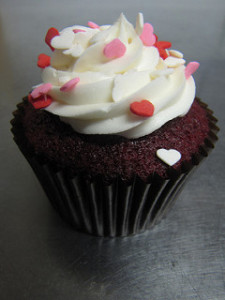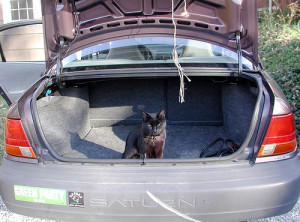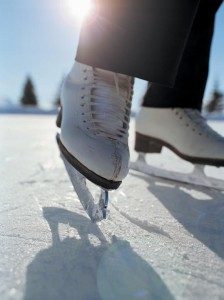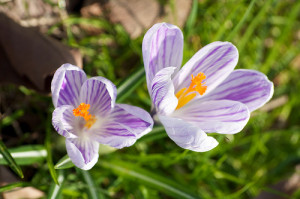
A teacher workday is a delightful opportunity for you and your child to enjoy the simple pleasures of personal time, to share activities together, to go deep with ideas and feelings. But as every teacher and parent knows, the trick is to find enough things for your child to do so she or he doesn’t get cabin fever.
Magic mood-changers
Teachers have discovered that this time of year is perfect doing short activities that can quickly change the mood of the day. These mini-events also grab children’s attention and engage them in teachable moments. Studies have shown that the brain remembers the first and last part of a lesson better than the middle. That is why it is better to offer short episodes of learning where there are more beginnings and ends and fewer “middles”!
Here a few favorite mini-events teachers use to fight cabin fever in the classroom. You can try them at home too.
Music and movement games. Can’t play fair outside? Do it inside! Put on some of your favorite music and do a cooperative version of musical chairs. The object of the game is to get as many friends and family on the chairs as possible. Nobody is OUT! Each time one chair is removed, everyone has to work together to get each other on the chairs. More indoor games to try include: a kitchen utensil marching band, Simon Says, two-minute aerobics, yoga, and jumping rope without a rope.
Winter picnic. Is the wind blowing outside your door? You can still have a picnic. Collect the picnic basket, the beach towels, tablecloths, and folding chairs and spread them out in the living room! Involve your child in planning, preparing, and sharing the sandwiches and snacks for the event. Set everything up, put on some warm music, and invite the entire family. Don’t forget your sunglasses. The best part: no ants!
Art projects. Art is always a great calming activity for children. If you are willing to get a bit messy, you and your child can share some fun moments together. Make food-coloring ice cube paints to share on a roll of paper: Fill ice cube tray with different colors and place a Popsicle stick in each for handles. Freeze. Your child can rub the ice cube “brushes” on the paper and watch as the colors “paint” and mix together!
Or, for a change of pace, try this in reverse. Instead of freezing the paint, freeze the paper. Wet plain white drawing paper and place on a sheet of aluminum foil. Place in the freezer overnight. Have watercolors ready to paint on the paper as soon as you take it out of the freezer. It will melt fast and create some interesting designs.
Quiet reflection. We are such an active culture, and children’s lives are getting more and more crowded by after-school activities that require them to be on the go most of the time. Taking a moment to not do is almost unheard of. Yet, it is an essential part of creating peace both inside and out. Through quiet perception games, children can learn to calm their minds and bodies quickly and easily. Try this: Invite your child to sit in comfortably. Then say: “Without talking, I want you to look around the room and notice something that interests you. Look at it carefully and notice everything you can about it without touching it.” (Pause.) “Now pretend you can touch it. Think about how it would feel if you could touch it.” You can do just one object or invite your child to find something else to look at this way. This game is not only successful at home but is wonderful in a crowded waiting room or on line in the grocery store!
 Valentine’s Day (February 14) is a time of love, friendship, giving, and caring. Americans use Valentine’s Day as an opportunity to tell friends and family how much they care. Children usually exchange cards at school.
Valentine’s Day (February 14) is a time of love, friendship, giving, and caring. Americans use Valentine’s Day as an opportunity to tell friends and family how much they care. Children usually exchange cards at school.

 What should you have in the trunk of your car in case of an emergency?
What should you have in the trunk of your car in case of an emergency?

 Here are some interesting fact about the upcoming Labor Day holiday that you may not know. Below are some tips on what you can do with your children to celebrate from cooking recipes to coloring pages. Use this time to engage is some cultural sharing with your families.
Here are some interesting fact about the upcoming Labor Day holiday that you may not know. Below are some tips on what you can do with your children to celebrate from cooking recipes to coloring pages. Use this time to engage is some cultural sharing with your families. STREAMER CASCADES: Cut and curl ten 2- to 3-foot lengths of metallic curling ribbon. Stack the ribbons and knot them at one end. Using craft glue, sandwich the free ends of several ribbons between splatter-painted stars. Tape the cascade to the top of a safety-flag pole (remove the flag first), then secure the pole to the bike. Tape more curled ribbon to the handlebar ends.
STREAMER CASCADES: Cut and curl ten 2- to 3-foot lengths of metallic curling ribbon. Stack the ribbons and knot them at one end. Using craft glue, sandwich the free ends of several ribbons between splatter-painted stars. Tape the cascade to the top of a safety-flag pole (remove the flag first), then secure the pole to the bike. Tape more curled ribbon to the handlebar ends. BELL JINGLERS: Slide three to five bells onto a pipe cleaner and fit it to your child’s handlebars, wrist, or ankle.
BELL JINGLERS: Slide three to five bells onto a pipe cleaner and fit it to your child’s handlebars, wrist, or ankle. SPOKE DECORATIONS: Weave star garlands into one wheel’s spokes and secure the ends, being sure to stay clear of brakes and gears. With scissors, snip along the length of some straws, then snap them into place on the other wheel. To make noise as you ride, cut some straws to half the spokes’ length. They’ll clack as they slide on the turning wheel.
SPOKE DECORATIONS: Weave star garlands into one wheel’s spokes and secure the ends, being sure to stay clear of brakes and gears. With scissors, snip along the length of some straws, then snap them into place on the other wheel. To make noise as you ride, cut some straws to half the spokes’ length. They’ll clack as they slide on the turning wheel. Known as the Fourth of July and Independence Day, July 4th has been a federal holiday in the United States since 1941, but the tradition of Independence Day celebrations goes back to the 18th century and the American Revolution (1775-83). In June 1776, representatives of the 13 colonies then fighting in the revolutionary struggle weighed a resolution that would declare their independence from Great Britain. On July 2nd, the Continental Congress voted in favor of independence, and two days later its delegates adopted the Declaration of Independence, a historic document drafted by Thomas Jefferson. From 1776 until the present day, July 4th has been celebrated as the birth of American independence, with typical festivities ranging from fireworks, parades and concerts to more casual family gatherings and barbecues.
Known as the Fourth of July and Independence Day, July 4th has been a federal holiday in the United States since 1941, but the tradition of Independence Day celebrations goes back to the 18th century and the American Revolution (1775-83). In June 1776, representatives of the 13 colonies then fighting in the revolutionary struggle weighed a resolution that would declare their independence from Great Britain. On July 2nd, the Continental Congress voted in favor of independence, and two days later its delegates adopted the Declaration of Independence, a historic document drafted by Thomas Jefferson. From 1776 until the present day, July 4th has been celebrated as the birth of American independence, with typical festivities ranging from fireworks, parades and concerts to more casual family gatherings and barbecues.